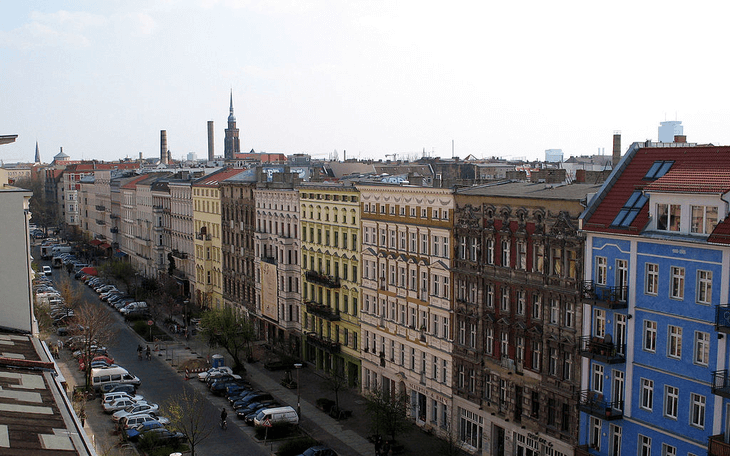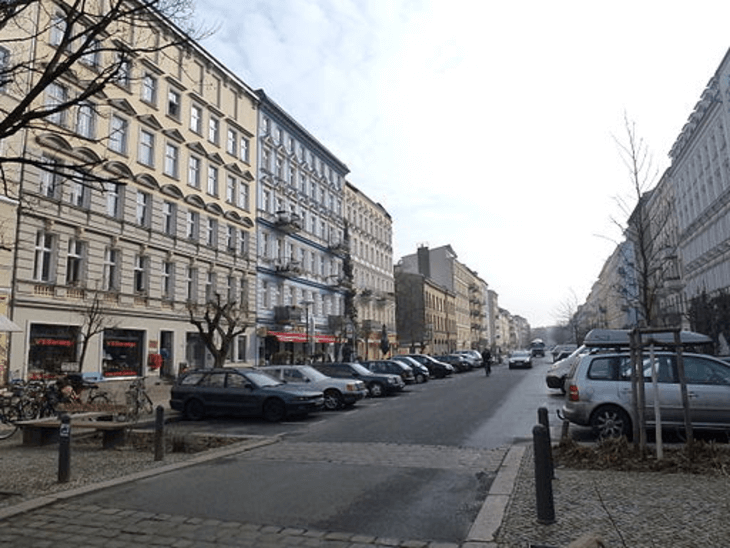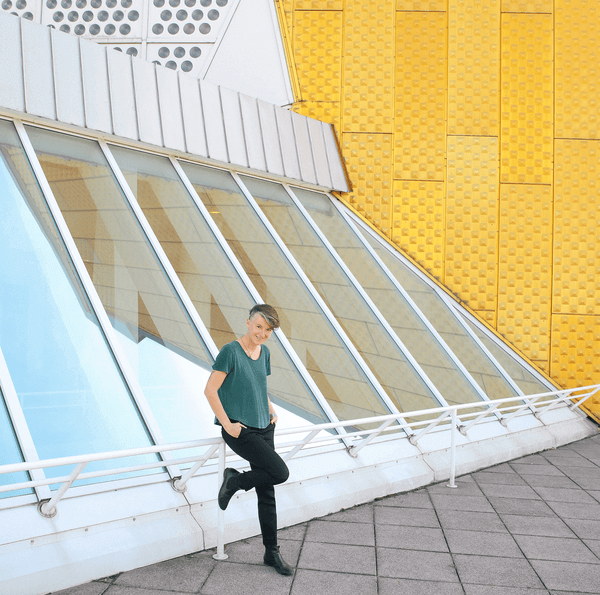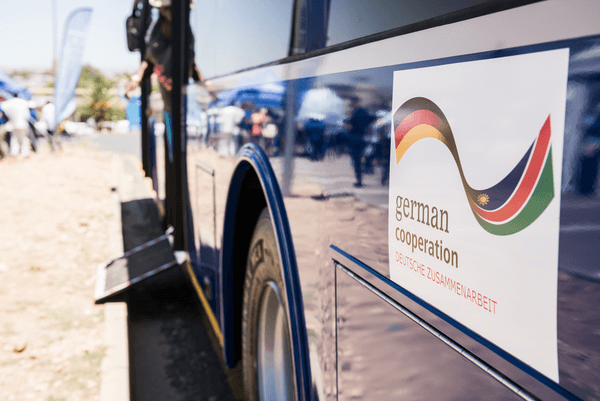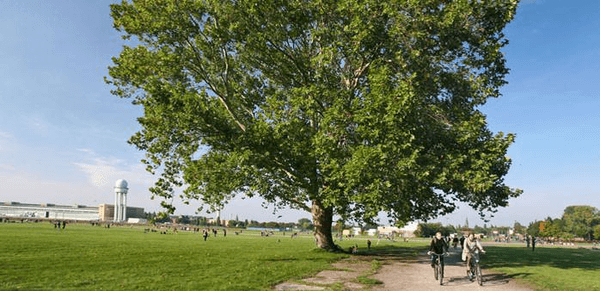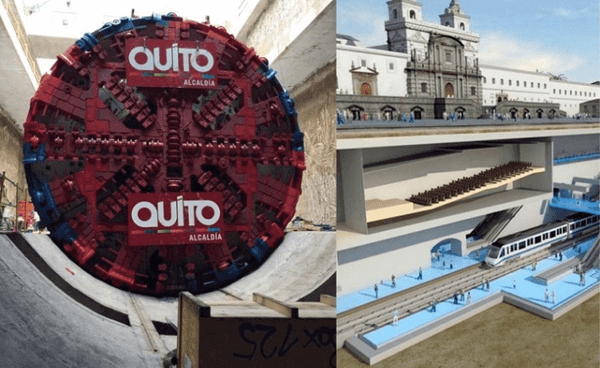Oderberger Street: participative renewal of a historically grown street environment
Status
completedCity
Berlin
Main actors
Local Government, City Government, Supranational / Intergovernmental Institutions, NGO / Philanthropy
Project area
Inner City
Duration
2007 - 2012
The main challenge of this project was to implement a concept of street renewal respecting the historically grown character of Oderberger Street and conserve the unique identification the residents have, while still satisfying needs of a modern urban environment.
The main challenge of Oderberger Street was to implement a modern urban renewal while respecting the historically grown character. As a reaction to citizen protests regarding the initial refurbishment plans, a participatory approach of urban design was adopted, utilising local residents’ input along with the different administrational units involved. A major objective was to establish an effective communication between the different interest groups, in order to find workable compromises for the renewal.
Berlin’s Senate Department for Urban Development and Environment was involved in the project, along with several different divisions of the local District Government of Pankow. A private consulting and development agency was contracted for the refurbishment and promoting the construction. To achieve a common vision, a combination of workshops, site inspections, and group discussions, with local resident participation, were held during the planning process. During the construction period, regular meetings with residents continued ensuring their on-going involvement, acceptance, and support.
Oderberger Street stays a unique place in Berlin's urban landscape as a hotspot for cultural and community gatherings with a vibrant atmosphere.
Although financial costs were high, the process structure and participative methods make Oderberger Street approach interesting for projects with strong resident lobbies and diverse interest groups.
Oderberger Street is situated in the neighbourhood of Prenzlauer-Berg. The street is definedby a mix of residential and commercial use. Most buildings in this formally working class area were constructed at the end of the 19th century. During the socialist GDR period, these types of buildings were neglected. Instead constructions of prefabricated buildings in East-Berlin’s outskirts were favoured. During the 1970/80s, residents with alternative lifestyles gathered in Oderberger Street. They started to improve the run-down streetscape themselves. In the 1980s, the residents were able to prevent the streets' buildings from being torn down. After Berlin's reunion in 1990, the "wild" character of Oderberger Street attracted creative people from other parts of the city: Though housing conditions were on a comparably poor level, cheap rent and an urban space open for interactions offered unique living conditions. Over the following decades a strong community developed, continuing to decorate its street with public art, urban gardens, and educational signs regarding horticultural installations. The process of gentrification however, started to affect the street and its residents' structure.
In 2007, Oderberger Streets renewal was agreed by the District and Senate government. The main tasks were to refurbish sidewalks, improve pavements, redesign traffic-regulating elements, install a new street lighting system, and extend the quality of playgrounds. Because of the strong community and its ever strengthening identification with "their" street, the importance of integrating residents in reworking the design became critical. Main challenges were to find a procedure, which ensured that the citizens' heterogeneous wishes could be reflected in the creation of a common and feasible vision. The discussion of the plans for Oderberger Street occasionally reached a very emotional level. Therefore, a sensitive way of moderation had to be found between the resident groups, district, city, and private interests. The need to find balance between commercial and residential interests complicated matters further. Eventually, the objective of this good practice was to implement changes of the street without destroying its "organic" social and physical urban structures, which have been growing over decades and under different external contexts.
In May 2007 Berlin’s Senate Department for Urban Development and the District Government of Pankow decided to refurbish Oderberger Street and contracted a private agency to develop a preliminary design in order to receive funding from the German Federation and the Land Government of Berlin (Program: "Städtebaulicher Denkmalschutz"). The plan was made public in September 2007. Attending citizens expressed diverse criticism, while the district preferred a standardized model of the street; residents campaigned to retain the unique character, especially the green spaces. As a result of the intense discussions, the district decided to implement participatory workshops in the planning process. The citizens’ initiative BIOS (Bürgerinitiative Oderberger Straße) was formed in October 2007. Their first action was to organise a survey of residents’ needs in cooperation with the District Government. Shortly after, the District Government announced plans for a new design incorporating the civil initiative and conserving 90 % of existing green spaces in the streetscape.
In December 2007 BIOS turned in a comprehensive appraisal of the greenery, street furniture and sidewalks. In January 2008 the main stakeholders undertook a common site inspection, during which the first planning-agreements were made. A central element of the participative planning was a public two-day-workshop, which was organized in the beginning of February 2008 by the District Government of Pankow, the private development agency and BIOS. In preparing this event, a second private consulting agency organised meetings, this time gathering only relevant parties dependent on the specific themes. Since it was a major objective to include the public, a press strategy was implemented in which all actors worked together to avoid inflammatory reports by media. In addition, residents were informed by posters, formal invitations, and events of BIOS. Essential tools such as: completed drawings, lists of relevant street-building regulations, and summaries of goals among others, were provided for the participatory workshops. 70 people - among them residents, shop owners, members of District and Senate Government, of the private development agency, and representatives of interest groups - took part in the workshop. On day one the needs of those represented were summarised and turned into steps of action. Given the main areas of focus, four thematic working groups were formed, in which the participants continued "working" on day two. Different positions were discussed and compromises found. The workshop was not only aimed at design issues, but also the maintenance of the special structures of Oderberger Street. “Godparents" took responsibility for certain areas of the street, meanwhile BIOS agreed to set up a brochure on the maintenance of greenery.
The workshop was considered a success with the results being applied to a new plan which was approved in September 2008. By February 2009, funding of the construction was confirmed by the program for the protection of urban heritage sites. The District government transferred the role of promoter to the private development, which had been responsible for the participative workshop already. From June 2009 onwards, there were 12 coordination meetings and site inspections involving the District Department for Civil Engineering, BIOS, and planners for landscape, architecture, and traffic. In September 2009 the District government and BIOS signed the agreement of maintenance of greenery.
Eventually, construction work started in July 2010. To minimise inconvenience to residents and businesses, the work was carried out in five building stages. Citizens were encouraged to participate during the building period: There were 22 meetings of BIOS and the private developer for coordinating and discussing problems between July 2010 and June 2012. Cultural activities took place in the street and art installations improved the appearance of construction sites.
In May 2012, mobile flower beds were presented to BIOS in a symbolic act. In August 2012 the process of participative refurbishment was completed with the opening of the "Hirschhof", a public playground and neighbourhood centre in a community courtyard.
The construction costs for this project totalled 2.3 Mio. EURO. main funding (2.1 Mio. EURO) was delivered by the German program for the protection of urban heritage sites, combining funds of Germany’s Federal Government and the Land Government of Berlin (Bund-Länder-Programm: Städtebaulicher Denkmalschutz). The participative planning process (e.g. workshops, consultants) was also financed by this source. The District of Berlin Pankow contributed 200,000 EURO of its own resources.
The particular character created by residents in the 1990’s was able to be preserved. At the same time current needs of a modern urban environment were met. Street-safety was improved by installing traffic-regulating elements and new road surfaces. The Sidewalks are now much more pedestrian, wheelchair, and bicycle friendly. New trees were planted and "islands of vegetation" created on the pavement. New banks and flowerbeds were provided. 56 mobile flower beds could be conserved, with their on-going maintenance to be undertaken by BIOS. In addition, Berlin water works installed a new sewer system: sections of pipes and drains were renewed; and electricity, communication lines, and conduits were modified. Related renovation works had been previously coordinated and bid tendering announced in an integrative way. This allowed construction to be sped up, resulting in less disruption and stress for residents.
The broad field of interests among residents, between residents, and governmental units were main barriers of this project. Though compromises were found on certain positions, some critical points could still not be resolved. The workshop could its ways of finding solutions, as discussions demand much of people’s time and energy. To fund the participatory elements, higher financial resources were needed. Though partly successful, here, as in other projects, it was hard to reach residents who generally have limited involvement in planning processes and public affairs.
The experience of Oderberger Street first of all shows the importance of recognising the individual qualities of urban spaces. Though a standardised procedure saves financial resources in the short term, the practice shows that implementation of special measures produces more satisfactory and sustainable results. The historical background of Oderberger Street created a unique opportunity and encouraged a rethinking of the philosophy of traditional planning processes. A strong civil society and local identification made the approach not only critical, but at the same time possible. Enabling residents to express their desires and opinions in a productive way was only possible with a high level of expertise in moderation. Setting up the right combination of participatory and representative elements proved to be critical for the fluency of the process.
Given this approach allowed for the inclusion of so many varying opinions, clear procedures, and deadlines were of the utmost importance. Equally it was critical to effectively convey to all parties involved, that it might not be possible to take all positions and subsequent demands in account.
- Amt für Statistik Berlin-Brandenburg (2012): Pressemitteilung. Anhaltende Bevölkerungszunahme in Berlin 2012. Potsdam: Amt für Statistik Berlin-Brandenburg.
- Senate of Berlin (2012): Berlin.de. The official town portal. Web: http://www.berlin.de/en/ (20.12.2012)
- Baumann, F.; Betz, G.; Detlefsen, M., Rolfes-Poneß, D. und Stelmacher, K. (2008): Workshop - Gemeinsam die Oderberger Straße gestalten! Kurzdokumentation.
- BIOS - Bürgerinitiative Oderberger Straße (2012): Bürgerinitiative Oderberger Straße. Main page. Web: http://www.oderberger.org/ (22.12.2012)
- Speckmann, C. (2008): Chronologie der bisherigen Planung der Oderberger Straße.
- SenStadt - Senatsverwaltung für Stadtentwicklung Berlin (2010): Städtebaulicher Denkmalschutz. Teutoburger Platz. Erneuerung Oderberger Straße, 1. BA zwischen Eberswalder Straße und Kastanienallee. Web: http://www.stadtentwicklung.berlin.de/staedtebau/foerderprogramme/denkmalschutz/download/foerdervorhaben/teutoburger_platz/oderberger_strasse.pdf (24.12.2012)
- SenStadtUm - Senatsverwaltung für Stadtentwicklung und Umwelt Berlin (2012a): Städtebaulicher Denkmalschutz. Oderberger Straße. Web: http://www.stadtentwicklung.berlin.de/staedtebau/foerderprogramme/denkmalschutz/de/foerdervorhaben/teutoburger_platz/oderberger_strasse.shtml (24.12.2012)
- SenStadtUm - Senatsverwaltung für Stadtentwicklung und Umwelt Berlin (2012b): Die Oderberger Straße gemeinsam gestaltet! Pressemitteilung zur Fertigstellung der Oderberger Straße und Eröffnung des Spielplatzes am Hirschhof. Web: http://www.stadtentwicklung.berlin.de/aktuell/pressebox/archiv_volltext.shtml?arch_1208/nachricht4754.html (24.12.2012)
- S.T.E.R.N. (2012): Press release - Prenzlauer Berg-Teutoburger Platz redevelopment area Programme section.
